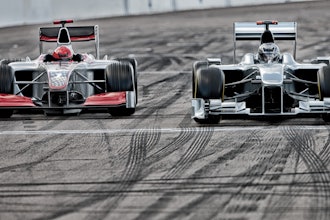Mike Sinnett, Boeing 787 chief project engineer, said…
"I design a cell to not fail and then assume it will and the ask the next 'what-if' questions," Sinnett said. "And then I design the batteries that if there is a failure of one cell it won't propagate to another. And then I assume that I am wrong and that it will propagate to another and then I design the enclosure and the redundancy of the equipment to assume that all the cells are involved and the airplane needs to be able to play through that."
Dreamliner battery manufacturer and supplier, GS Yuasa Corp., expects to maintain car and aircraft battery production while 787-related issues are being investigated.
Is the root problem related to Boeing? Maybe. How about GS Yuasa? Perhaps.
Improperly-installed wiring is one potential culprit, which would pretty squarely place the blame on Boeing.
Another ‘one of the many things’ that the NTSB’s looking at is the possibility of dendrites causing short circuiting within battery cells, which would point to GS Yuasa. Ah, that ol’ tin whisker problem, right? Well, not really. We recently did a piece at IEN/Finishing World about tin whiskers that includes the following…
Are whiskers and dendrites the same thing?No, they’re not. Says NASA…A ‘Whisker’ generally has the shape of a very thin, single filament or hair-like protrusion that emerges outward (z-axis) from a surface. ‘Dendrites,’ on the other hand, form in fern-like or snowflake-like patterns growing along a surface (x-y plane) rather than outward from it.
Just how much metal is in 787 batteries?
Each of the eight cells contains about 100 feet of metal foil wound and folded over itself with sheets of plastic separators between the layers.
These windings contain the electrodes, the negative made from graphite-coated copper, the positive from lithium cobalt-dioxide-coated aluminum.
So, the problem could be related to design, component manufacturing, component or aircraft assembly, or even go way back to proper finishing of the metals used in the batteries? Should Boeing, the feds, and GS Yuasa involve whisker-dendrite experts such as the folks at Uyemura? Probably.
Actually, it gets even more complicated with standards and testing since, according to this article at The Seattle Times…
Boeing estimated, for instance, that a battery problem would cause smoke less than once during 10 million hours of flight, while the plane so far has experienced two incidents in less than 100,000 hours.
Former safety-board member John Goglia said in an interview afterward the briefing that the statistical standard for safety of the 787 batteries had been set too low by the FAA—and “Boeing didn’t even meet the reduced standard.”
Huh? A reduced safety standard? Yes…
Goglia said the standard FAA safety requirement to cover the failure of any system critical to flight is that it must not occur more than once in a billion flight hours—which means such a failure is not expected to occur in the life of the fleet.
So the 787 battery-safety requirement that assumed a failure once every 10 million flight hours—100 times more frequently—is already a low bar by FAA standards, he said.
This is looking really ugly. I was on Boeing’s side in our last article, but now I’m not so sure.
Want to go all tin-foil hat conspiracy theory? Here’s an article at AirWise that seems, backhandedly, to suggest a cover-up that started in Japan…
Comments from both All Nippon, the 787's biggest customer to date, and Japan Airlines point to reliability issues with the batteries long before a battery caught fire on a JAL 787 at Boston's airport and a second battery was badly charred and melted on an ANA domestic flight that was forced into an emergency landing.
ANA said it changed 10 batteries on its 787s last year, but did not inform accident investigators in the United States because the incidents, including five batteries that had unusually low charges, did not compromise the plane's safety, spokesman Ryosei Nomura said on Wednesday.
Is Boeing the only aircraft manufacturer facing such issues? No. According to this article at Engineering & Technology, Airbus is planning to use ‘similar’ lithium-ion technology in their new A350, and ‘so far has stood by the modern power packs’…
"We studied the integration of these batteries on the A350 very carefully," Airbus chief executive Fabrice Bregier said. "I am very relaxed about this."
The first US grounding of a new model of passenger jet in over 30 years has focused attention on the risks that lithium-ion batteries can overheat and ignite a fire that is harder to put out than most flames, because of the solvents involved.
How do you wrap-up such an enormously complex issue involving an enormously complex conveyance and the safety of air travelers? We can’t do so. Not yet, anyway. This one’s going to take awhile.
One bright side? We’re talking only 50 grounded planes at this point. Orders, however, are somewhere in the area of 900.
Another positive? The problem—whatever it turns out to be—will certainly be fixable.
Shifting corporate leadership while global 787 investigations are in-play doesn’t send a good signal, but it seems that such a shell-game may be underway at Boeing.
I’m becoming much more concerned as the Dreamliner situation slowly unfolds. I’m also worried when Elon Musk starts making sense.
What do you think?


















